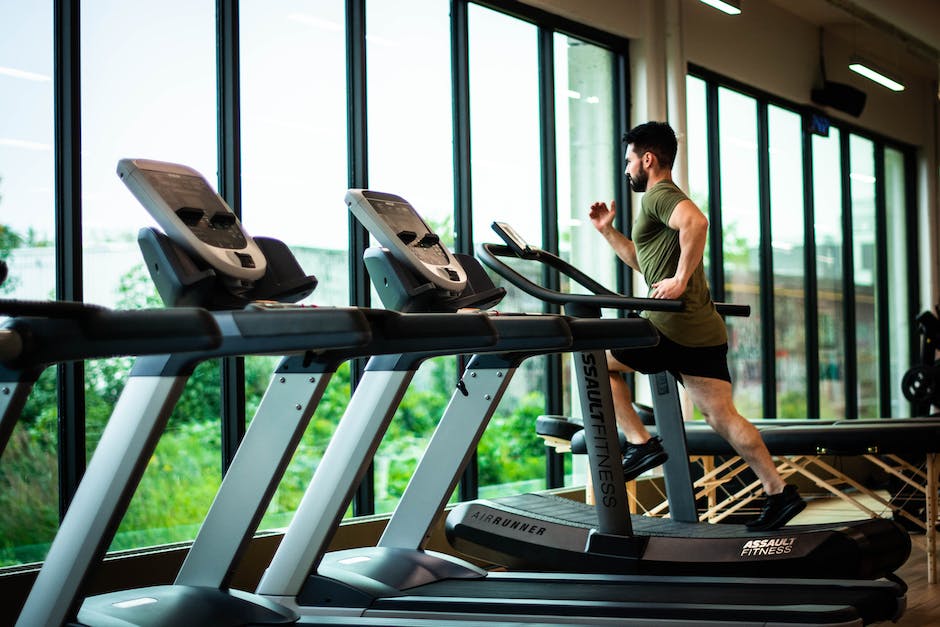When it comes to running, there are hundreds of options to choose from. Trail running, road running, track running, interval running, and so on. One of the most popular forms of running, especially during the wintertime or extreme heat, is treadmill running. Treadmills are indoor machines designed to mimic outdoor running without having to leave your house.
The reasons why so many people choose to run on a treadmill are varied. Some folks prefer the controlled environment that treadmills offer. Others enjoy the ability to track their progress and data with ease. Whatever the reason may be, there are pros and cons to every kind of running, and treadmill running is no exception.
In this post, we’re going to explore the benefits and drawbacks of running on a treadmill. If you’re considering adding treadmill running to your routine, this post will help you decide if it’s the right choice for you.
Pro: Controlled Environment for Training
One of the most significant pros of running on a treadmill is the controlled environment it provides. With a treadmill, you can easily adjust the speed, incline, and duration of your workout. Unlike outdoor running, there are no external factors like weather or terrain to impede your progress. This means you can customize your workout to fit your needs and fitness level, making it a great option for beginners and seasoned runners alike.
Another benefit of a controlled environment is that you can run at any time of day or night. If you have a busy schedule, a treadmill can make it easier to fit running into your routine. You can run in the morning before work, late at night after the kids have gone to bed, or whenever it’s most convenient for you.
Lastly, if you’re recovering from an injury or need to take it easy, treadmills can provide a lower-impact workout compared to running outside. By adjusting the incline and speed, you can control how much impact your joints experience. This can help you get back on your feet and continue to train without causing further damage to your body.
In the next section, we’ll look at the downside of running on a treadmill – the lack of terrain variation.
Con: Lack of Terrain Variation
While treadmills offer a controlled environment that can be beneficial for some runners, they also present some downsides. One of the significant cons of running on a treadmill is the lack of terrain variation. Outdoor running challenges the body because of the uneven surface, which can help develop strength and stability. However, when you’re on a treadmill, the surface is entirely flat, and this can affect your running efficiency.
Running on a treadmill can make outdoor runs more challenging because a flat surface may feel easy in comparison to running outside on an edge-filled trail. The treadmill itself can only simulate flat terrain, which can limit your ability to build strength and become a better runner. Plus, running outside tends to be more enjoyable, and the changing scenery can help stimulate your mind, making running feel less like a tedious workout and more like a fun activity.
Despite the lack of terrain variation, there are still ways to create longer and more challenging workouts on a treadmill. By adjusting the incline or using intervals, you can add a level of complexity to your routine that will challenge your body in different ways.
Pro: Ease of Tracking Progress and Data
Measuring progress is essential to any training routine. Keeping track of your pace, distance, and heart rate can help you set and achieve realistic goals. One of the main advantages of using a treadmill is the ability to track your progress and data with ease. Modern treadmills come with features such as heart rate monitors, distance counters, calorie trackers, and more.
Not only does tracking your progress help you measure improvement, but it can also be motivating. Seeing how far you’ve come and knowing how much more you need to do can keep you focused and determined to achieve your goals. Modern treadmills even come with apps that enable you to save your workouts allowing you to track your progress over time easily.
Moreover, running on a treadmill can make it easier to set and achieve goals. For instance, if you plan to run a specific distance in a specific time, you can use the treadmill to speed up or down automatically to ensure that you stay on track. This can be more challenging outdoors because of external variables like wind, weather, and terrain.
Running on a treadmill isn’t for everyone, but if you have a busy schedule, live in an area with extreme weather, or want to track your progress more accurately, it can be an excellent alternative to outdoor running. In the next section, we’ll explore another downside of treadmill running – decreased running efficiency.
Con: Decreased Running Efficiency
While running on a treadmill offers a lot of benefits, it can also lead to decreased running effectiveness. With a flat surface and no outside variables, your body is not challenged in the same way as running outdoors. As a result, your stride mechanics may change, and you may not be training your body adequately for outdoor running.
Efficiency and form are crucial to running, and incorporating outdoor runs into your training can help improve running mechanics. Outdoor running requires that you deal with uneven surfaces and various weather patterns, which improves your running technique, ultimately making you a more efficient runner overall.
It’s worth noting, though, that if you’re new to running and still trying to improve your running form, a treadmill can be a useful tool. A flat surface can help you concentrate on your form and focus on your mechanics.

Conclusion: Incorporating Treadmill and Outdoor Running
In conclusion, there are pros and cons to running on a treadmill. While treadmills offer a convenient and controlled environment for training, they lack terrain variation, leading to decreased running efficiency. Additionally, tracking progress data on a treadmill can be simpler than tracking outdoor runs, but it may not motivate you in the same way running outside does.
If you’re considering incorporating treadmill running into your training, it’s important to remember that it shouldn’t fully replace outdoor runs. Running outdoors challenges your body in different ways than running on a treadmill and is essential for improving running mechanics and overall efficiency.
The key takeaway is to incorporate both forms of running into your routine, as indoor and outdoor runs have their benefits and drawbacks. Running outdoors and on a treadmill are complementary to each other and can ultimately make you a better, more well-rounded runner. Remember to switch things up and modify your routine by adjusting incline, speed, and intervals, and you’ll be sure to see progress in no time.

